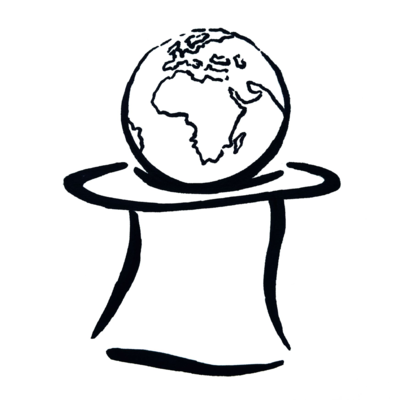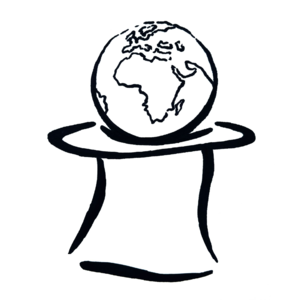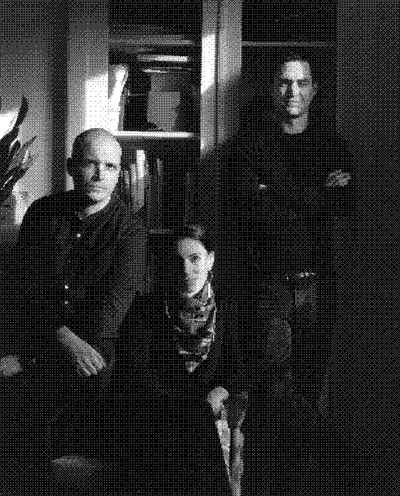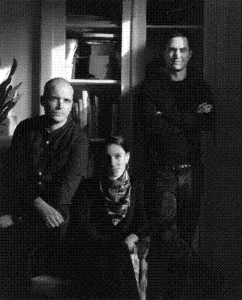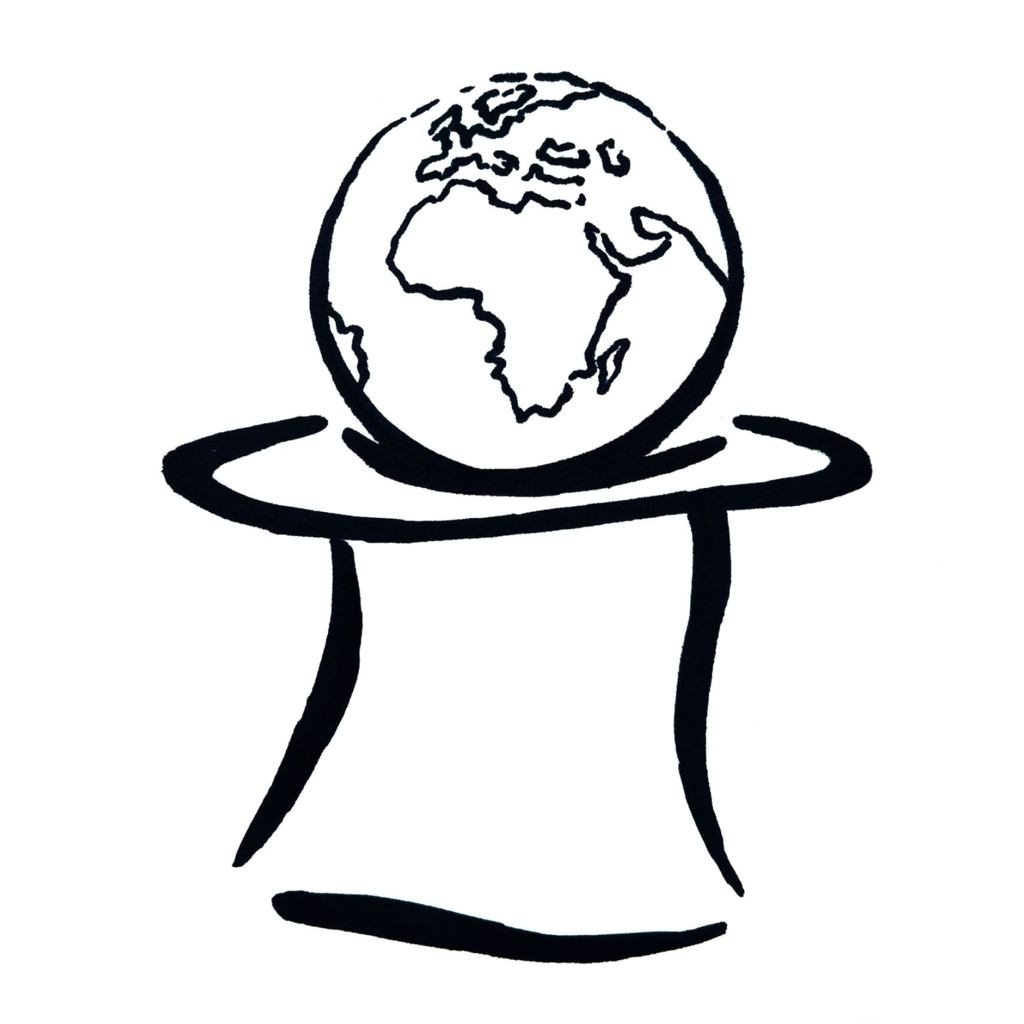Hi, Adam and Stefan. Could you introduce yourselves?
I am Adam Rodgers, the co-founder of International Magic.
SE
My name is Stefan Endress. I am also the co-founder of International Magic.
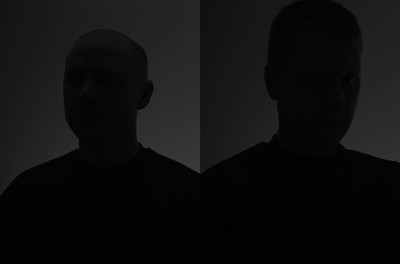
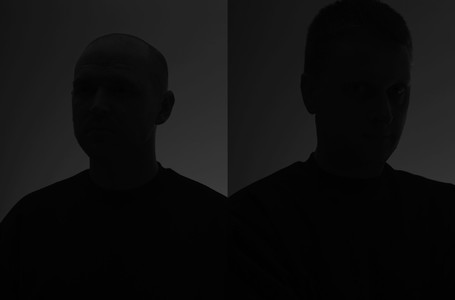
Stefan Endress and Adam Rodgers
How do you present International Magic when you have to explain it?
AR
When we first started International Magic, we didn’t have a specific plan or strategy to move into one particular area. The goal was to explore many different areas. Stefan and I have been involved in the digital world since the internet’s inception and we’ve seen lots of different tools and trends and mediums come and go, so we understand the transience of digital culture. At the moment, we’re doing a lot of consultation and early strategy for brands. Also collaborating with institutions and artists.
SE
We create experiences digitally, most of the time, and we also always loved the idea of having a physical element. A lot of our work actually stems from experimentation. We’re both self-taught. There was only the Internet. There was no teacher who told you how to do it. We just hacked websites, tried things ourselves. That’s where it stemmed from.
AR
I like the idea of creating work where you don’t know how it was created as well. I think that’s something we try and do with International Magic: we try and create a unique feeling or something new each time with every project we create.


Which means that, when you start, you don’t have a preconceived idea of where you will land.
AR
Exactly. Sometimes we do and sometimes we don’t.
SE
Sometimes it comes through a workflow or a technology. We find an aesthetic that Adam discovers together with Agnete (Morell, our London-based Art Director). And then we play with it and a new idea arises. It’s pretty much like with any new technology. You have new things coming up that you could not have done beforehand. That’s why it’s super important for us to learn new tech and new apps and new workflows. All these kinds of things inspire the ideation process of our studio.
AR
Combining that with socio-cultural influences and cultural context is really important as well: how can you make something impactful within culture using new technology?
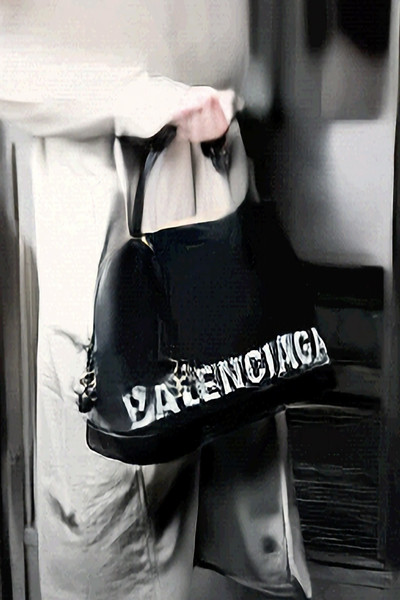

Balenciaga

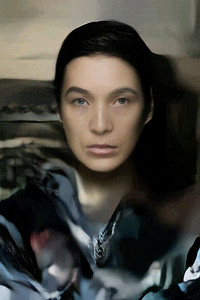
Balenciaga
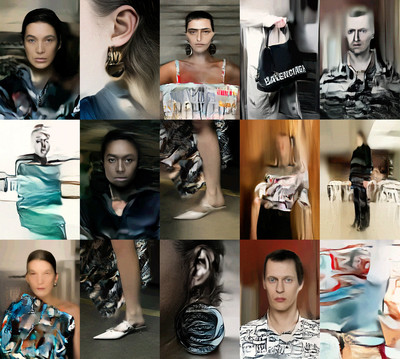

Balenciaga
What’s your current state of mind?
AR
Always fairly optimistic. That’s why I gravitated towards Stefan in the first place. I ran my own studio before International Magic called Remote Location (aka Studio Remote) where I was working on my own with other collaborators. I started to work with Stefan on several projects and I just liked the energy and the focus… the dedication and the optimism. It’s so important to find someone to share your work life with. I’ve experienced working on my own and having to make all the decisions by myself. It is quite isolating and meeting someone like Stefan who shared my optimism and hopeful outlook was really important
SE
Regardless of work, family, or global affairs, there are so many ups and downs you have to jump through and, when you’re back in focus, you’ve got to be positive because only bad things come out of negativity. That doesn’t mean you shouldn’t be aware of the outside world. My mom always says that when your alarm bells start ringing, just be aware, but usually just go with your gut feeling and try to channel the energy toward something and then it will succeed.
What got each of you into design?
AR
I’m a little bit older than Stefan, so for me, my first experience with design was in Glasgow. I grew up in Scotland and there was a really thriving club culture in the U.K. and particularly in Glasgow right about then, in the late 80’s early 90s. It was very visible. There were posters everywhere, flyers in every shop, loads of amazing, handmade graphic design. Also graffiti. I used to do graffiti years ago. I was very into hip-hop since the 80’s. I was always into computers. The first computer I got was a Commodore VIC-20 in 1983 where I could program printers and stuff to do things and it was super lower-end and simple. Also the BBC Micros we had in school, that’s how I learned early programming. Playing games on computers, also early computer graphics, was very influential in our style, but, at the time, I was probably doing a lot of physical artwork, exploring various techniques and mediums. It wasn’t until early internet that I joined the dots and started using actual computers like early macs to make graphics and start messing around with animation programs like early versions of Flash, Director, Shockwave. That was very inspiring to me.
Cool. What about you, Stefan?
SE
I’m only 35, but it feels like so long ago since I began. I started magic at the age of 7 and I had to sort of promote myself in a way. I would do magic shows for the neighbours and thought “Oh my god, I need business cards!” and then “What’s a logo?” and these sorts of things. I also did loads of graffiti and the first important thing that I did when I was about 13 was – back in the day they were called “steelies,” these trains painted end-to-end with graffiti – I travelled around with a friend and we took photographs of trains and then we scanned the negatives and stitched them together in Photoshop, but there was no content aware and magic AI that could combine everything and make it look like one train. We had 15 images and then we scanned each one and then digitally stitched them together. So creating that one image was a process of several hours. Then we published the final image on the graffiti platform. That was my first whole production.
Adam, you mentioned that you had a studio, was it Studio Remote?
AR
It was originally called Remote Location, and then it evolved into Studio Remote when I started working with more people. Before that, I had started a record label called Numbers in Glasgow, which began as a club. Quite a large part of my life from the age of fifteen onwards was doing clubs in Glasgow with friends and running various record labels and eventually we realised we were all trying to sign the same artists, so we joined all our record labels into one larger record label called Numbers, which is still going with around 60 releases so far with various different artists. So that was my first life project I suppose, and I was doing all the posters / graphics and album covers for that, which evolved into running my own practice, Remote Location. One of the guys from Numbers, Calum Morton (AKA Spencer), started working at Warp Records in London and introduced me to everyone there, so I started designing various games and digital projects for artists like Flying Lotus, Harmonic 313, Hudson Mohawke & Squarepusher. We created a lot of projects, a lot of Flash games, and then eventually we made the WARP site, which was the first iteration of warp.net (in collaboration with Universal Everything). So that was pre-International Magic. That was my world, very music oriented.
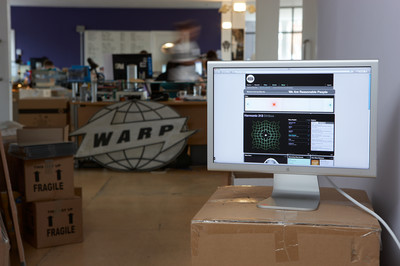
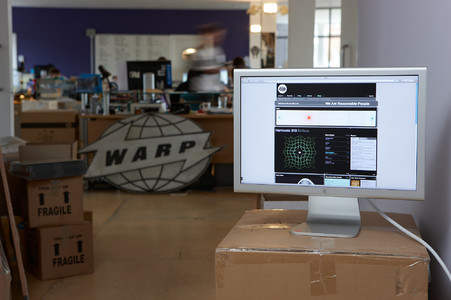
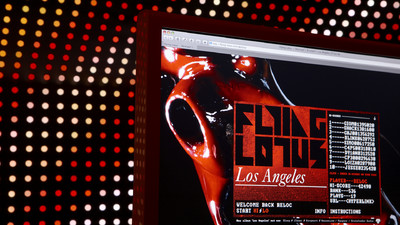

Flying Lotus
Stefan, are you still doing magic?
SE
I’m sort of a professional magician, but I guess you say you’re a professional when your whole living is based on magic. The good thing is that it’s more like a fun thing. I love the energy when you’re in front of a crowd and when you have a talk or do a magic show. Every time, when we have actual people in the room and you’re on stage, the energy, you can’t replace it. No Zoom call, nothing can balance it out, it’s a completely different thing.
I founded my first company with a couple of friends called Unfun. And then I went back to university, studied design in Nuremberg, and started as an intern in London at Future Corp with Marc Kremers, and then he hired me as an Art Director. That’s where Adam and I met, at Studio Three in Dalston, London. I always come back to that moment because that’s where it all started out. That’s where I learned those skills and the way I think today stems from these people that I’m very close friends with. And Adam, that’s basically where we “bred” (laughing).
AR
One of my biggest influences is that working environment. I knew people through the music scene, but I was working in isolation and I’d met Tommi (Thomas Eberwein AKA Thomas Traum) before and admired his work and called him up looking for somewhere to work. And he was like “Ah, come in!” He had a shared studio space with Marc Kremers, Carl Burgess & Tom Daracott (More and More), Damien Poulain and Tara Darby. Some amazing people passed through to work. FIELD were there for a few years, Jesse Kanda, Arca, Mike Tucker, Malika Favre, Régis Tosetti… so many interesting people.
What was your intuition when you two you met then decided to found International Magic? You were quite experienced by then compared to people who found a studio at 25.
SE
It wasn’t like Adam and I were working separately. We worked on many jobs together: me as a freelancer and Adam with Studio Remote. When you have such a good collaboration, you end up sometimes “permalancing” or just working with someone almost full time. And that happened for quite a while. It was kind of weird having two entities if we were just doing everything together. Eventually, it just clicked. I guess the respect for each other. Trust. Especially in the beginning of a company, I think trust is probably the most important thing, because you have so many ups and downs and sometimes things don’t work out with clients, or not in the way that you were hoping and then you really just need to trust. I think it comes before skill or aesthetics or any of that design stuff. If you’re not able to almost blindly trust someone, then you shouldn’t go into an endeavour with them.
AR
We also leveraged an opportunity at the time. In 2015, I was contacted by a producer Eleanor Scott, to work with FKA Twigs. We were working at Manchester International Festival and Eleanor (who now works at Somerset House) organised a collaboration with FKA Twigs for a project called Soundtrack 7, which is one of the first projects I worked on with Stefan. We all stayed in Manchester and worked with Twigs for 10 days and the whole team of choreographers, dancers, lighting designers and directors. It was a really successful project and, soon after, Twigs asked us to make her website. This was pre-International Magic, but at the time we were just about to launch it, and it was a natural progression to use that project launch in order to start a new company.
SE
It was natural, but I would say that actually when you look back on anyone’s life, if you see a chance, then you just have to go for it. You have to take the risk. I don’t believe in luck so much. There’s an amazing quote: “The harder I work, the luckier I get.” It’s a good one, but sometimes you also need the right momentum. Natural talent, I don’t believe much in that so much: the more you practice, the more you improve.

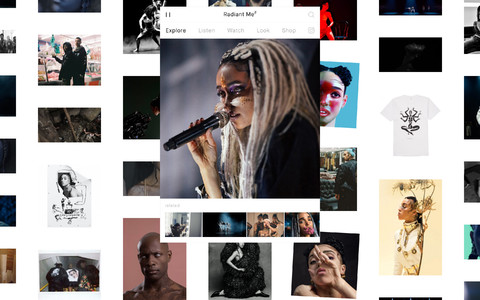
FKA Twigs

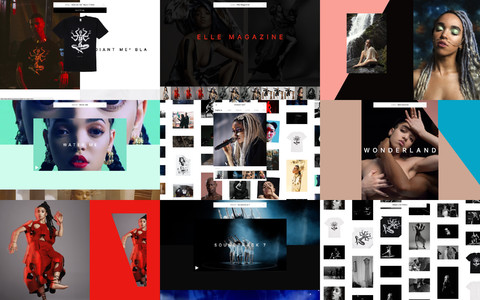
FKA Twigs
Do you think that comes from magic, where you need to practice a lot?
SE
Yes, 100%. Usually, when I practice a new magic trick for a show, I practice for a half a year to a year before I show it to anyone because it needs to be perfect. You can’t just go halfway and then be like “Oh, I messed it up.” Then your trick is ruined. That’s why you need to practice, see the opportunity, and then go for it.
You both mentioned some creative references, Studio 3, but also the club scene. Do you have some new references that are emerging, people that are really inspiring you?
AR
Working in the field of design – and I’m talking from our perspective – we don’t tend to look at other designers work so much anymore. I’m reading a lot about architecture at the moment. We did a couple of projects with Martine Rose last year, which was inspired by so many different architects like Rem Koolhas, Balkrishna Doshi, and also Isamu Noguchi. I’m looking backwards a lot at some of these 20th-century artists at the moment, which is divorced from the current design industry I suppose.
There’s a lot of interesting music happening right now. We were in Munich recently hanging out with the rest of the team and our designer Anja (Lekavski) played this album by Surly, a Polish musician. The album’s called Trip to Warsaw. I was inspired by that. It’s influenced by a lot of early Dubstep and Rhythm and Sound. Just the way he plays with space and sound is exciting. That was one of the latest musical references I can think of that I was inspired by.
SE
I would like to add references outside of design. I always found it quite funny and a bit cheesy when people say their kids are inspiring them. But now I have two kids, and it’s definitely true. You just see the way they act and play. Everything is just open. A piece of music is the same as a beautiful colour. They react to it in the same way. They don’t differentiate. They don’t put things in categories. What I’m particularly interested in is understanding how other people, other great creatives, how they think. I’m trying to find more similarities, like Adam said, to architecture. Building a house, from a conception point of view – I mean I’m not an architect – but there are similarities to building an ecomm site or a digital art piece or something. We have so many similarities. Back in Munich, when we were walking around town, there was this little Dieter Rams store, the bookshelf from Dieter Rams. He is an icon, an absolute GOAT. He didn’t have the tools we have. It was quite something to say “No, that radio player should have just one knob, and that’s how it should be.” Can you imagine how many fights he must have had to go through to actually get that passed? He didn’t have the same resources available like we do.


Martin Rose


Martin Rose


Martin Rose
How do you maintain your level of creativity?
AR
Learning by doing is important. Obviously, reading, listening, and talking about subjects you find interesting. That’s the key. Maintaining that level of interest in subjects that inspire you. For me, that’s the most important thing. Whenever I find myself having a debt in creativity, it’s so simple to get out of it by just reading something interesting, which triggers your brain to start making connections between subjects and finding new context.
SE
Adam is – I don’t know if he realises it – but he’s way more open than I am. I’ve become more and more of a UI, UX system design-focused brain.
I started teaching at the academy of arts in Nuremberg. When you actually look at the younger generation, the 17 or 18-year-olds, their aesthetic, it’s a whole new process. They don’t think the way we do. It’s important for us to see the world from their perspective. Because, at the end of the day, we want to entertain and excite these younger people, and if you only think in terms of your own problems and your own area, you don’t reach as many people.
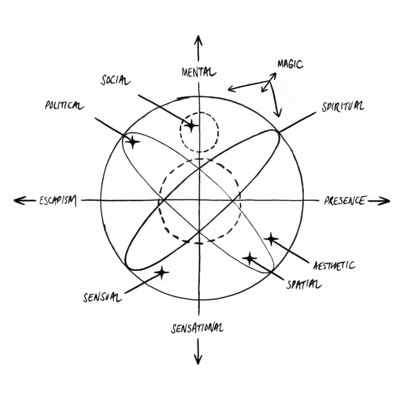
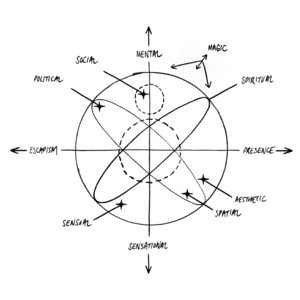
sketch by International Magic
You were focused on making your own tools as well, right? Was it your intention to help and to do a bit of transmission too?
SE
As I said before, building our own tools and the early version of Dekks was really a pitch-deck generator for ourselves because we always wanted to present in the same way, being able to add content from our own image library. So we were always interested in developing our own product. As you described, I think Keynote, PowerPoint, these tools – even if Apple is a bit cooler for designers – they always come from a highly business-focused view and it’s not made for designers or people who work remotely in the design / creative / arts industries.
We started building Dekks and then the pandemic hit, and we had to put it on the bookshelf and get back to business because we had to maintain International Magic, but the whole idea was creating presentations almost like constraints where you can drag and drop things very quickly and not put everything into an A4 that you can print. I mean, who would print that out anyways? We all scroll or swipe. So the idea was to have a storytelling device that you could compose easily within a couple of minutes and recycle ideas you might have used for other times which maybe didn’t work out, and then you duplicate something. You just make it a smart tool for presenting.
That maybe stems from that whole magic thing. It’s so important. You persuade and you entertain and you excite. Those are the tools that you use for presentations. And none of these apps do that – not even Figma, which is made for designers. Or you have a really good designer who can create components that your producer can maybe reuse, but you still need design skills. Dekks was a step towards pre-composed modules and blocks that you can design with your own content. Most of the time your presentations repeat. You need the same templates and modules. You just stitch them together in a different way.
AR
I think these days presentations are not linear at all. I find when presenting ideas that you do end up moving around and having that ability to kind of almost edit in real time, you’re presenting something but you can edit the presentation in real time and you can move things in and jump around. It’s more of a holistic experience rather than a linear experience.
SE
It’s also about just simply almost un-designing presentations, while still making them look and feel good. A lot of designers over-design their presentation and their design becomes more of a thing than the actual ideas that they present. At the end of the day, the design really should just elevate the ideas that you have to show for your clients. That’s what we’re trying to solve.
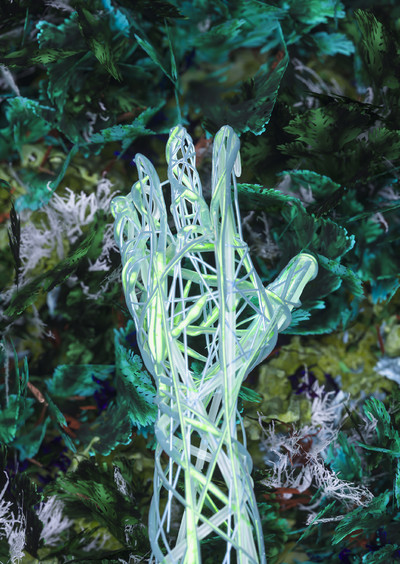

Super Futures
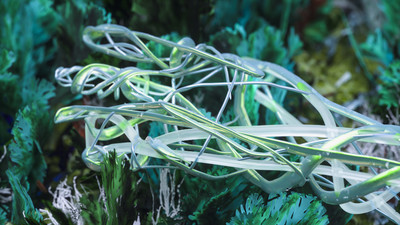

Super Futures
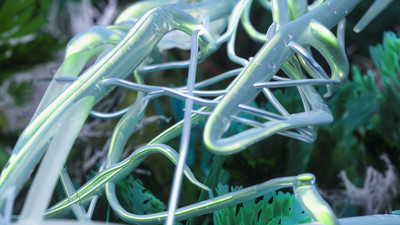

Super Futures
You also have an excellent reputation for reels. How do you approach them?
AR
For me, it’s about impact. As long your approach is original, contextual, and you have a good idea, good visuals. Sonics are really important when we shoot music for a reel. The sound has to be interesting, iconic, and impactful. Reels are quite a cool medium to communicate something, a mood, a feeling, rather than explaining it with words or talking heads. It’s a statement. It’s an impactful statement.
SE
It’s about showing your work through that medium. It literally has only one job. It should get you excited for that crew or team who sits behind that thing because sometimes when you capture work and you just display it, it’s too clinical. With a reel you can really put your personal taste of music to it, and you can cut to it. Exactly what Adam says, sometimes we start with the music first. We know our work anyways because we did it. So you find the track first, then you edit, then you go back and forth, and you can have so many filmic ideas, a climax in the end or something. You can have fun with it. For me, that’s why video is so successful. It just triggers a lot more than a still, especially with the sound.
I was curious to know if you have some strategic references.
AR
Stefan reads a lot of business and product strategy books to inform our thinking generally.
SE
I think that’s important for us as designers. We always want to stay in our design bubble. We love pretty books, we love really nice posters and just nice stuff, but for strategic purposes, you almost have to go hardcore business and read those boring things. You have to get a bit uncomfortable when they talk about negotiation practices, then once you know them you can be sitting in a high-stakes meeting then you’re sort of like « Oh my god, they just did that technique! I know what that is now! ». It’s more about learning the mechanics of business. It’s actually fun sometimes. As a designer you’re never going “full business.” I would say if we would have met a financial advisor in the early stages of the business, they would have said “What are you doing? You’re not running a business, you’re running a charity.” But this is the power of creativity: sometimes you push through something that doesn’t make sense from a hard business perspective, but you see the greater goal which is working on something which excites you.
There’s a really good book I’ve read lately called “Convinced!” by a professor from Munich. His name is Jack Nasher. It’s about negotiation. It was amazing when I first read it. Some parts are cheesy, but it’s a really good idea. Chris Voss also talks about a lot of techniques that magicians use. There’s one technique, for instance, where the big motion hides the smaller motion. It’s called misdirection. There’s also the technique of mirroring a person. If I want to make you comfortable, like with you and me, we’ve got the same haircut, so I’m instantly mirroring you.
These techniques, they help in business. Just don’t try to be too cool for school all the time.
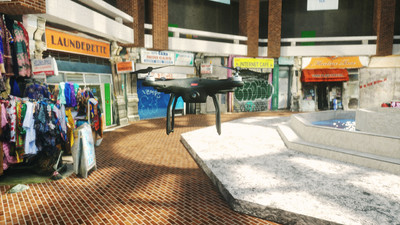

Martine Rose for Nike
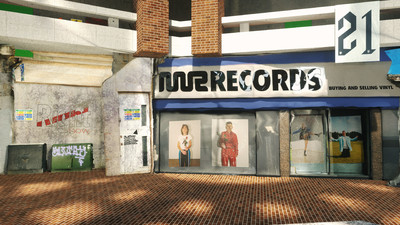

Martine Rose for Nike
Who’s handling strategy for you?
AR
We do it ourselves, in collaboration with our executive producer, Ben McKinnon.
Are you doing monthly meetings? Once a year? How do you decide where you want to go and how you get there?
AR
Recently, I travelled to Nuremberg and Stefan and I worked on strategy all week together. Ben arrived on Friday, and we hung out together all weekend and continued the strategic conversations.
SE
We used to do it twice a year, but now a bit less, especially with the pandemic. So last time was amazing. We meet up and then we talk about it: “Where do we see ourselves in five to ten years?” And that goal might shift, but it’s more to do with talking about the way you want to go forward, which is inspiring. It gets you out of the daily routine where you have to deliver on the clock for a deadline. It’s good. It inspires you. It sparks ideas.
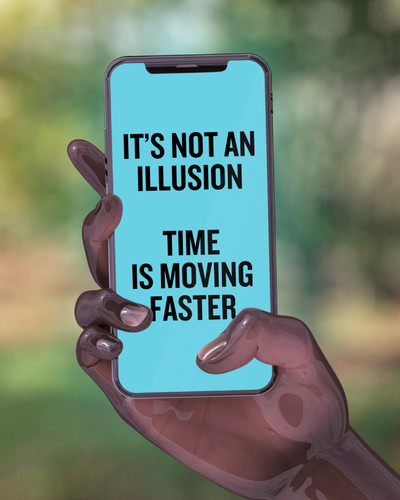
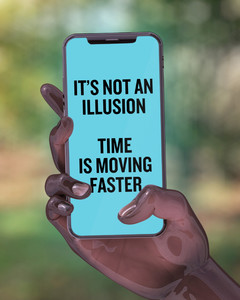
Film for Somerset House exhibition
Are there any strategic decisions that you can share with us?
AR
There’s one thing we’ve been talking about for a while. Right now, International Magic is a U.K. company, so we’re launching a German company called Magic as a Service (MaaS), which is essentially the technical arm of International Magic, more product-focused. International Magic is staying in the same area: creative strategy and design. That’s the next move for us as a team. The MaaS business is a collaboration with two of our team members: Ben McKinnon, our executive producer, and Christoph Jeworutzki, our Technical Director in Germany. So that’s effectively a quartet who will be running that side of things. And then other businesses will spawn from MaaS. We’re iterating on several different products and ideas at the moment, so there will be a lot of activity on that side of things in the next few years.
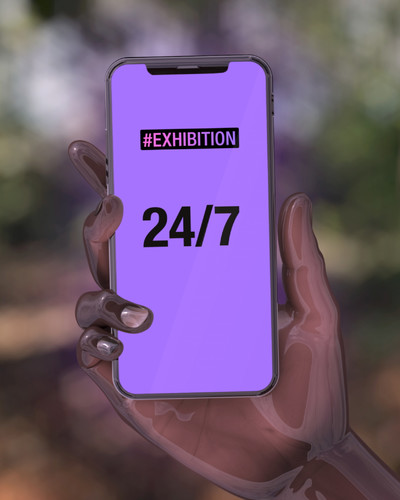
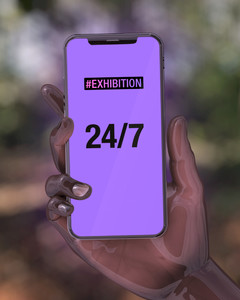
Film for Somerset House exhibition
When you say products from Magic as a Service, what kind of products do you mean?
SE
Anything that we like and also tools that would help ourselves. We’ve built so many things over the years that help us. Workflows, typefaces, apps – anything that’s digital, but it could be physical products as well. Otherwise, we’re looking into Web3. There are so many things that are still not solved, like the obvious things that you actually expect to be solved. Currently, we’re working on a simple newsletter engine where you can create and send newsletters to an audience. You have big, massive programs like Mailchimp and all these newsletter platforms where you’re like “Oh my god, where do I start?” But ours is not targeted at big corporations, it’s more targeted at smaller studios or individual creatives who just want a really nice subscription and unsubscribe flow, and the ability to write content with ease via apps like Notion, for instance. Our whole business runs on Notion. It’s a CRM app where you can write and create databases and relational structures. You can link things together. It’s probably the best tool I’ve ever worked with. You can hook it up and send emails. Things like that.
Are you thinking there might be investments at some stage?
SE
I think we want to – and I hope we’re thinking the same thing (laughing) – When we started Dekks, one week in, we had a phone call from Silicon Valley, one of the biggest investors. We have had a few talks with big-time investors and funding, but we love keeping it quite small in the beginning because you can make decisions really quickly and when you have someone coming in with really big money then you have to report to them and the actual product development becomes slower. Right now, we want to be quick and we want to have fun and create things that we really think bring value. Keeping it quite small doesn’t mean that we’re not going look for investment later on down the line when we really need it, but for the first couple of things we don’t need investment yet to actually execute and iterate on these things.
AR
It’s why I’ve always liked doing things or learning things by myself or with others. I think we’re in a position now where we can do this by ourselves. Certainly for MaaS, I can’t really see us getting an investment for that directly. I’d like to keep that independent, but I can certainly see us working with investors for certain products later down the line.
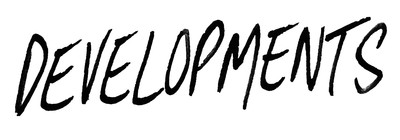

Sketch by International Magic
How do you see your business development? I noticed that you joined forces with other creative talents like Thomas Traum, Novembre – is that for business prospection?
AR
We talked with Thomas Traum about working together for years. We made his website. We worked together in the studio. We worked on a lot of projects together for WARP and we’re all very good friends, but I think because we were all enjoying our separate studios we wanted to maintain our individualism but also work on something together. Inside the industry, if you’re good at something, people want it again, you know? Especially brands. They see something you’ve done and they’re like “Can I have that? I want that exact thing that you’ve done for someone else.” So you end up being put in boxes and obviously Tommi is very good at CGI and storytelling and films and 3D, so he’s approached by agencies or brands or commissioners at a very specific stage and we’re exactly the same. We were definitely in the artist portfolio realm for a while. That was all people wanted from us because we were very good at it after we’d done several portfolio websites.
So it was about moving ourselves into a position where we could be approached for larger projects that were in their infancy and we could have an impact on all channels of communication: physical and digital. We spoke with a lot of close collaborators, people we worked with, friends, people we admired, who all run individual practices. This year we’re looking at common processes and goals, and we just started talking together, and it evolved very quickly from there. We had conversations online. I’ve still not met, for example, Jeanne-Salomé Rochat from Novembre in Paris or Nic Hamilton in Australia, but we talk all the time on Zoom. So building up this network of different talents and minds that can come together to offer something different than what everyone else is offering. Collaborating together on projects, whether as a full team or in silos. For example, we just finished a large strategy document for a “Metaverse” activation in collaboration with Nic and Jeanne Salomé, which was energising, and TRAUM INC and The Experience Machine (AKA TEM) are working on a project together which is a physical and digital activation. We find that we’re getting a different caliber of email. For ONE, we’re getting emails where people are asking us what to do at the very early stage of a project. So I guess it’s kind of working: writing the brief in collaboration rather than producing something which has already been ideated. I think the idea was to create a platform where people could approach us at an earlier stage. That’s why the vision and the identity are a little bit cryptic.
And on the International Magic side, how do you handle the business development then?
AR
It was really straightforward from the beginning. We’ve always had a list of people we want to work with: people we respect, people we admire. And we’re just working our way through the list.
SE
It’s a funny one because… I’ve always created a list. Actual names on a list of people that I want to work with. You know, if you manifest that stuff, those names, those people, those institutions or whatever, it actually becomes real. It’s actually magical in a way. I’ve always been a Kanye fan. Not just because of his music. The way he thinks is different to anyone else. He just sees things that other people don’t see. Adam and I always wanted to work with him, and I remember we launched the 032c website and the next day we had an email from Adidas and the Yeezy team working on his product. We didn’t approach them or send them emails. Sometimes, if you work towards a certain goal, you end up working with the right people that you want to work with.
But you’re still potentially saying yes to some projects which are not on the list.
SE
For sure. It’s not like we get any job we want. Sometimes you have to say no and sometimes you have to say yes or you want to say yes. It’s easier to say yes. It’s really hard to say no sometimes… It’s three things: general interest, schedule, and at the end of the day, budget, or the business side of things. Sometimes they conflict, sometimes you have an amazing project, but then you also have ten people on your team that need a salary each month. It’s a fine line and an epic split to sometimes take the hit. But there’s the project and the creative output value in comparison to how much money it might bring in… and sometimes you’re getting offers that are not so interesting, but the budget is insanely great. But then that would mean you would turn down a lot of amazingness and sacrifice for money, which sort of doesn’t make sense. It’s a fine line. I would generally say we don’t work on things that we don’t believe in or don’t like. I think that’s the first rule of how we say no. The second is the feeling. You’re on a call with people and you instantly feel it: “Are you vibing with them? Do you get along? Is it the right energy? Are they cool? Or is it just business?” And that tends to define if we say yes or no.
We don’t pitch anymore. Very early on, we did a few pitches. Years ago. You don’t solve the problem. It’s not a problem-first thing, it’s a solution-first thing. If you go from a problem-first perspective then the problem is that you actually have to understand what’s going on. And you can only do that in a super tight collab with the client. You may have really slick aesthetics or cool ideas, but it doesn’t justify it. I don’t want to work three weeks on something and then do the magic presentation and the client goes, “Wow, we love it!” or “Ah, that’s okay.” I think it’s not in our DNA anymore to pitch. And it doesn’t come from an ego place. I generally don’t think we can solve or do anything for you by pitching. We’ve pitched and won, and then we did something completely different: not the pitch brief. So there’s no point in pitching really.
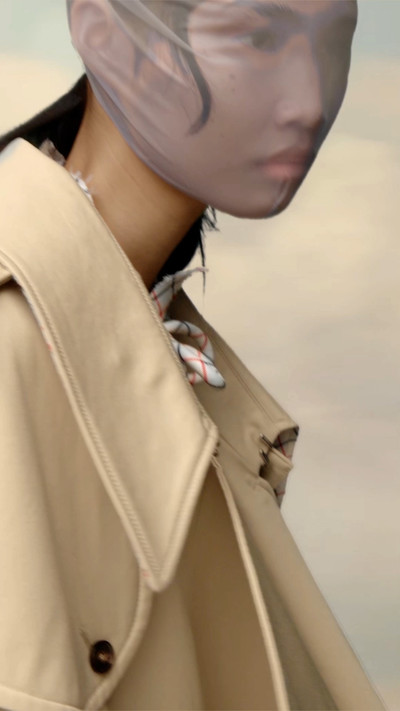
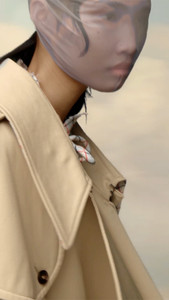
Maison Margiela Mobile App
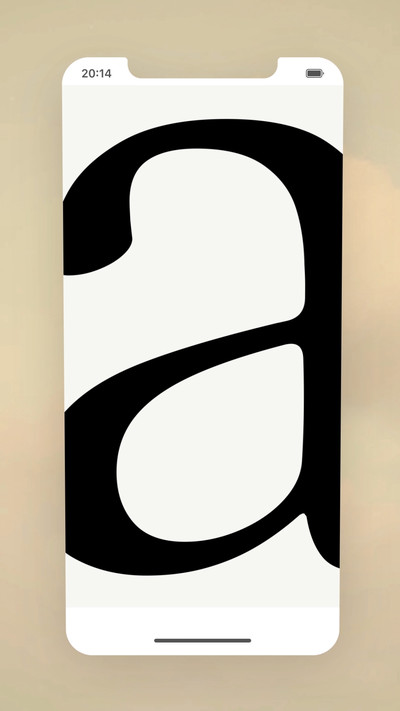
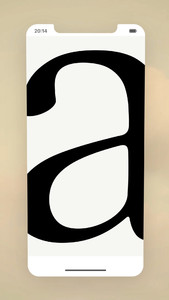
Maison Margiela Mobile App
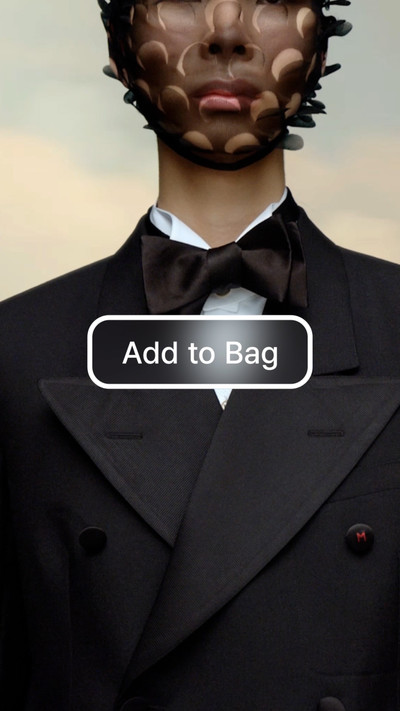
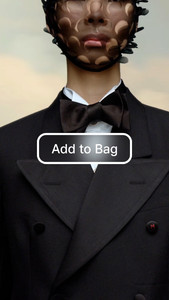
Maison Margiela Mobile App
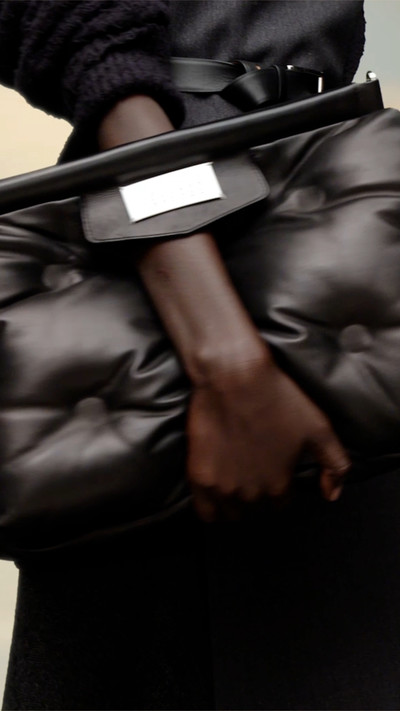
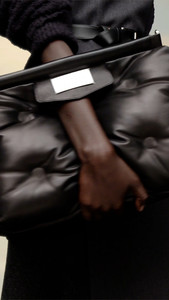
Maison Margiela Mobile App
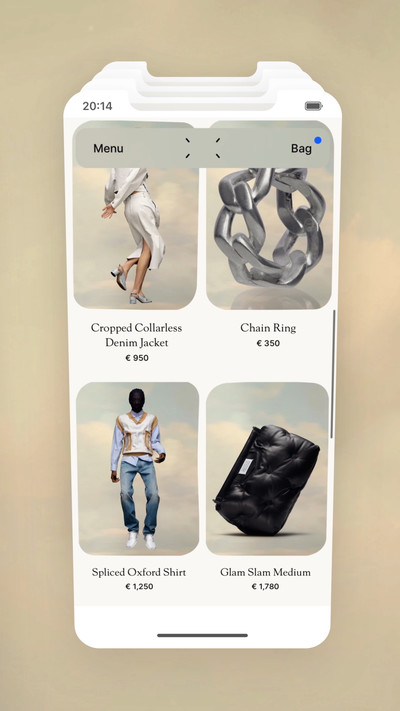

Maison Margiela Mobile App
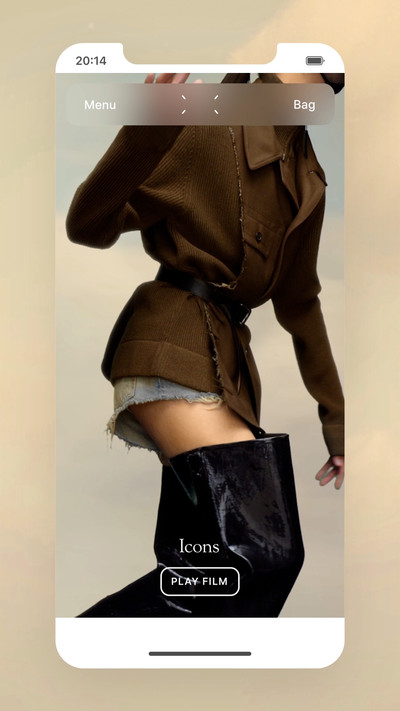
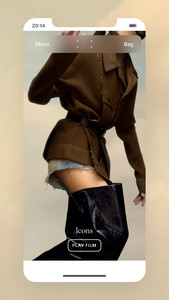
Maison Margiela Mobile App
I have the impression that you’re a bit niche as well in the sense that you’re some of our favourite designer’s favourite designers. Do you feel that as well? Did you cultivate that?
AR
No, not on purpose, not at all. It’s funny. I don’t think we’re niche, I think we’re just flying under the radar a bit and we’re not so outspoken when it comes to pushing our work on social media or our website. We’re not aggressively self-promotional. From my perspective, I think that stems from love of underground music culture. Sometimes the best shit is shit you have to look for. You have to dig for it. It’s like looking for samples. If you’re a hip-hop producer, you have to dig hard to find the gems hidden away. So I feel like, unconsciously, we’ve been flying under the radar. I think other designers can maybe see that as well.
SE
There’s one magician. He was the magician’s magician. He never did magic in front of an audience. He only did seminars and talks and to educate other magicians, but his skills were like – the magicians didn’t know how he did it. Daryl. He died a couple years ago, but he was amazing, all his card tricks. You know David Blaine and all these street magicians. Those card tricks they show today stem from Daryl’s legacy.
When you had your strategic meeting last week, did you talk about your communication?
AR
We did. It’s something we’ve been meaning to do for ages. Our website is quite old now, so definitely a priority is working on a new website because we’ve obviously created a lot of stuff in the last few years which we haven’t published. I watched a great talk by our friend Hassan Rahim regarding this matter. He takes a quite similar approach to us. He’s not the best at self-promotion. He’ll work on projects and sometimes he won’t even publish something for two years. He won’t tell anyone about it: it will just appear. And I feel like we’re kind of unconsciously doing that as well. It’s a mixture of being too busy and just being more interested in doing the next project (laughter).
It comes back to inspiration and influences. I think one of the things I find most interesting is finding the seams in other people’s practices. I find that way more interesting than the final product. What people’s process is for creation, what their workflows are. Stefan and I have both been more active in doing talks and educational seminars with students, so now we’ve had a bit of practice in that side of things. We’re planning on being a lot more open-source with our process and our workflows and creating a discourse for students, etcetera, and making the process a little more real-time so that it’s more of a resource for students. I suppose Virgil [Abloh] was a massive inspiration in that respect. His way of thinking and his way of pushing culture forward through education was very inspiring.
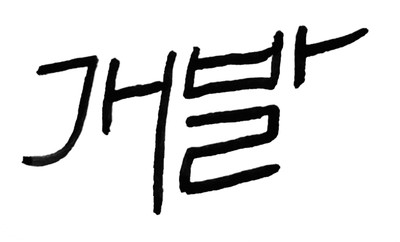
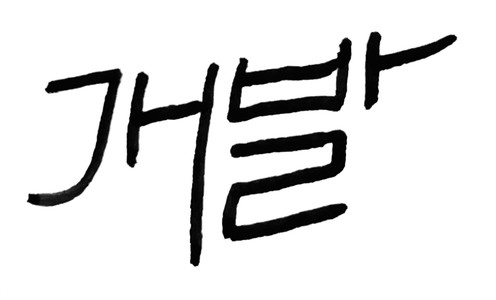
Developments in Korean, by International Magic
Is this your way of doing communication as well as transmission? Do you think that otherwise it’s useless?
AR
I think so. I think direct communication to people in a room is something Stefan’s almost an expert at. We did this talk at Us by Night and I’m always amazed at how good Stefan is at switching it on and captivating an audience, which, obviously, he’s learned from practicing magic in front of a crowd. I’ve never been so good at talking to crowds, but it’s nice to have a wingman when you’re on stage. It gives you confidence.
SE
It’s not something we do on purpose, for communication or self-promotion. For me, and I’m pretty sure for Adam too, it stems from open-source thought. Everything I’ve learned in terms of development or tools or design comes a lot from open-source software. There are so many people around the world who don’t even have a relationship with the design world. They are just open-sourcing stuff so other people can learn from it, copy it, iterate on it, manipulate it, hack it. With information, it’s just really helpful to get it out and talk about your work. Just spreading it to other people, even though sometimes I think no one’s really interested in what I’m doing. But then, when you actually get the feedback from these events or talks or interviews: “Oh, I just read your interview thanks for doing it, it showed something that I wasn’t aware of.” That’s part of open-sourcing. Showing it. Don’t be secretive. I think those times are over. Not saying that you should reveal every secret, but you should give the information or knowledge away for free and not expect anything back. You get it back anyway.
How many people are you currently working with?
AR
We currently are 8 people plus a network of regular freelancers and specialists that we activate on specific projects.
What’s your ideal studio size?
AR
I think the current size for us is ideal. We’ve kind of worked toward this for years quite naturally. I’m super happy. Maybe another, smaller team inside the creative side would be good. We spoke about hiring another small team within international magic, so yeah. I think around about 8 to 12 is a good number. Otherwise, it becomes unmanageable and you spend a lot of time managing people.
SE
I think your job type just switches. I think we tend to slowly grow. Very slowly. We want to have intensive relationships with our people and team because we spend so much time with them. I spend more time with my team than with my family, almost, during the day, so for me it’s really about just the team and getting the right people. I don’t want to grow fast. I want, in terms of business, to grow successfully over time. Step-by-step. Maybe in three years’ time we will want to be larger or not, but for now I think the team size is great.
How would you describe the current creative market? And, on a side note, you mentioned already working on a Metaverse project. How would you describe this whole thing going on creatively at the moment?
AR
I’m intrigued by the idea of business invading something that hasn’t happened yet. The result is a saturation of creatives and a lot of it is speculation. I do like the fact that young people are really up for learning tools. I think back to when we were coming up, the number of creatives was much, much less. There’s so much interest in the field now. I don’t see it as competition at all. I think it’s amazing that people’s brain patterns are moving towards more creative solutions for everything.
SE
You mentioned teaching and I actually feel quite strongly about it because from my last teaching sessions I realised that universities and academies are stuck in the past, and our design job today relies so much on technology and so much on thinking and systems and all that stuff and it’s a bit left out in university. They don’t really teach that stuff so much, or not all of them. Some are starting to do it and have a real open playing field. Those ones really understand it, but some schools don’t realise that it’s not setting type on a poster anymore. It could be, it can be, and typesetting is one of the most important tools and crafts or skills you have to learn as a graphic designer, but it’s not that anymore, that era is slightly over. I think we have to understand that, from now on, everything is built on top of technology and so you need to understand, code, develop. You don’t have to develop yourself, but you have to understand what is powering it. If you understand the principles, if you understand how those things are connected, you will be and become a better designer. I think that’s really, really important. And lastly, I wanted to say that I want young people to lose a little bit of respect for technology. Like, “Oh yeah, I know how to put a poster up on TikTok or Instagram and design that.” No. Download stuff and hack it. Be disrespectful to technology. Try to break it. Try to hack something. Make your own thing out of it instead of hopping onto these big platforms and playing within the rules. Try not to do that. Try to do something else.
AR
That’s why blockchain and Web3 is exciting. There are a lot of upsides and downsides, but I think the idea of building something new is really intriguing for young people.
SE
Exactly. The whole blockchain thing is so well made for creatives and designers and we’re super early. We’re talking about 1986 of the internet for Web3 right now. I think just get into that and try it out.
Is there something that still worries you about attention span, UX design, or social media?
AR
It’s something we’ve talking about internally for years. This modern fixation with conversion is quite interesting to us as a concept. It’s something we certainly have to think about when we are creating web experiences. Now we know a lot more about it. You can see through a lot of these dark patterns that these large social media companies employ. Whether it’s Adobe hiding the unsubscribe to creative cloud or Instagram using invisible algorithms to distract attention from or attract attention towards certain topics. It’s all quite fascinating, the more you understand about this. This stuff is, for me, is the foundation of what should be taught in school. Everyone should be learning media studies and semiotics.
SE
Schools, universities, academies, need to stop thinking that they know everything. They need to teach the young generation how to teach themselves. Because it’s going so fast. No teacher, no professor in the world can keep up with the speed of inventions and new technology. It’s not about teaching a topic. Of course, we can teach the principles, but let’s just teach how you can teach yourself as well.
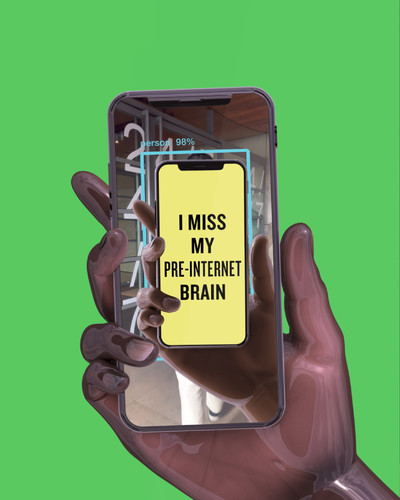

Film for Somerset House exhibition
If you had to do another job at another time in history, what would it be and when?
SE
I would definitely become a full-time professional magician. Magicians have been around for a long time and hopefully will continue to be. I would just be one of these guys from the Middle Ages. The cups and balls routine, you know. One of these cheeky guys who perform in front of an audience. I like working close to the audience, right in front of your nose. You see and feel something. Rather than big stage, Houdini vibes.
AR
How do I top that! Something outdoors for sure. I’ve spent half my life chained to a desk so, something outdoors. I grew up playing sports, I love playing basketball. Professional basketball player (laughing).
Would you recommend any book for people who want to teach themselves? To learn? Or fiction books that are inspiring?
AR
I used to be super into science fiction and speculative futures fiction when I was growing up, but I feel like now we’re in that future already, so I think the most interesting books are non-fiction, for me at the moment.
My friend Matt who works at Nike. He created this project called Inner City Print Resource (I C P R ®), which is kind of an Instagram blog for books. I posted books hererecently that I read and liked.
SE
I generally like biographies. Great minds. I read a lot of really product-related stuff – Growth hacking, and all the stuff that I know that I’m not good at. Sometimes I find really cool stuff in it that I can use for myself in design, but it’s mostly about stuff that I don’t know anything about. That’s what I’m trying to read.
SE
There’s a great design office called Ill-Studio and they run General_Index. This is my favourite book. It’s almost like a Wikipedia-style book. You just open to any page and read about a subject. I love that. It’s so modern and insightful. And very random.
